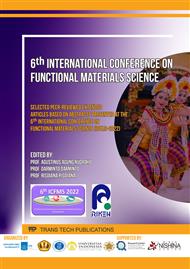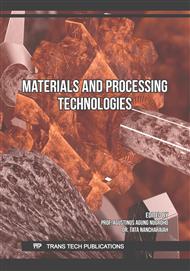p.3
p.11
p.19
p.27
p.35
p.43
p.55
p.63
p.71
A Coin-Shaped Polypropylene Bio-Carrier Fabricated Using a Filament-Based 3D Printer for Wastewater Treatment
Abstract:
The utilization of the moving bed biofilm reactor (MBBR) has been identified as a promising technology for reducing water pollutants. This study focuses on designing a novel bio-carrier using 3D printing technology for use in an MBBR for wastewater treatment. The bio-carrier is made of polypropylene filament with four variations in specific surface area. The study investigates the relationship between the specific surface area and the amount of adhering biofilm on the bio-carrier. Results show that type-4 bio-carrier with a specific surface area of 1438.16 m2/m3 and a pore diameter of 1.8 mm to 4.9 mm has the highest mass of biofilm attachment at 2.598 grams. This research provides insights for designing bio-carriers with suitable pore diameters and specific surface areas for improved MBBR performance in wastewater treatment.
Info:
Periodical:
Pages:
55-61
Citation:
Online since:
September 2023
Keywords:
Price:
Сopyright:
© 2023 Trans Tech Publications Ltd. All Rights Reserved
Share:
Citation:



